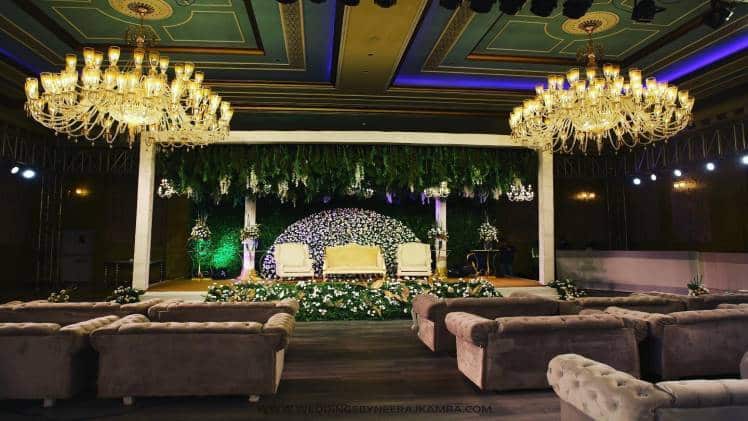The Cultural Splendor of Chandeliers and Jhumar Lights

Introduction:
Chandeliers and Jhumar lights, synonymous with opulence and elegance, have transcended their functional role as sources of illumination to become cultural symbols that reflect the aesthetic preferences and societal values of various civilizations. These exquisite light fixtures have a rich history, evolving through time and across diverse cultures, weaving intricate tales of craftsmanship, symbolism, and societal aspirations.
Historical Evolution:
The history of chandeliers dates back to medieval times when these elaborate light fixtures adorned the grand halls and chambers of European castles and palaces. Initially consisting of wooden spikes to hold candles, chandeliers evolved over the centuries, incorporating various materials such as crystal, glass, and metals. Their intricate designs became synonymous with wealth and status, symbolizing the grandeur of aristocratic households.
Jhumar lights, on the other hand, have their roots in the traditional art and craft of South Asia. Originating in India, the word ‘Jhumar’ refers to a hanging ornament, and these lights are an embodiment of the region’s rich cultural heritage. Crafted from materials like metal, glass, and beads, Jhumar lights are characterized by their vibrant colors, intricate patterns, and often incorporate traditional motifs, making them an integral part of celebratory and religious occasions.
Symbolism and Significance:
Chandeliers, with their radiant presence, have come to symbolize not only wealth but also enlightenment. As they illuminate large spaces, they represent the triumph of light over darkness, both literally and metaphorically. In religious and cultural contexts, chandeliers often find a place in places of worship, symbolizing divine illumination and spiritual enlightenment. The intricate crystal designs also evoke a sense of purity and clarity, further emphasizing their symbolic significance.
Jhumar lights, deeply rooted in South Asian culture, hold diverse symbolic meanings. In traditional weddings and celebrations, Jhumar lights are believed to bring good luck and prosperity to the household. The colorful and intricate designs reflect the vibrancy of the region’s festivals, creating a festive atmosphere and fostering a sense of joy and unity within communities. Additionally, the craftsmanship and artistry involved in creating Jhumar lights often carry forward generations-old techniques, preserving cultural heritage and promoting skilled craftsmanship.
Cultural Integration:
Chandeliers and Jhumar lights have seamlessly integrated into various cultures, transcending their geographical origins. In contemporary times, these fixtures are not confined to lavish palaces or traditional ceremonies but have found a place in modern interior design, bridging the gap between the historical and the contemporary. Many designers around the world draw inspiration from the rich history and cultural symbolism of these lights, incorporating them into diverse settings, from luxurious hotels to contemporary homes.
Societal Reflection:
The cultural significance of chandeliers and Jhumar lights extends beyond their aesthetic appeal. In many societies, these lights have become a status symbol, representing affluence and refined taste. The presence of a chandelier in a home, for instance, often indicates a certain level of prosperity and social standing. Similarly, the use of Jhumar lights in festive decorations can signify cultural pride and a connection to heritage.
Conclusion:
Chandeliers and Jhumar lights stand as timeless symbols of cultural richness, craftsmanship, and societal values. From their historical roots to contemporary applications, these lighting fixtures continue to captivate and illuminate spaces around the world. Whether adorning the halls of grand palaces or enhancing the ambiance of modern interiors, chandeliers and Jhumar lights serve as beacons of cultural identity, reflecting the aspirations and artistic sensibilities of diverse civilizations throughout history. As we celebrate the craftsmanship and symbolism embedded in these luminous creations, we recognize the enduring cultural legacy they carry forward, transcending time and borders.




